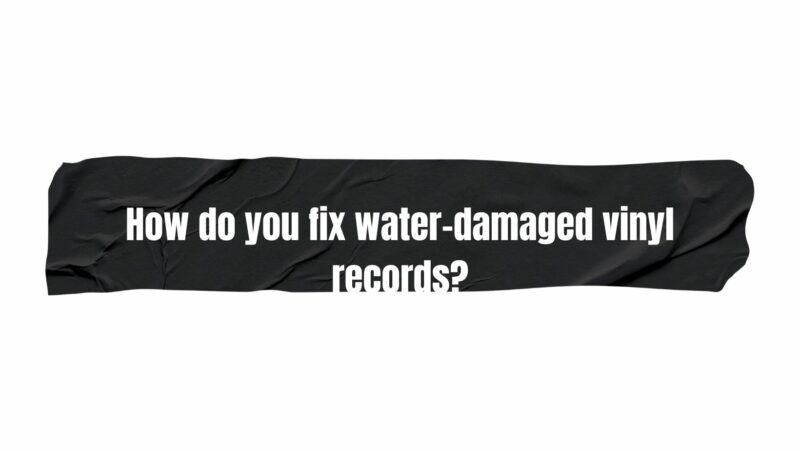Vinyl records have experienced a remarkable resurgence in recent years, captivating audiophiles and music enthusiasts alike with their warm analog sound. However, mishaps can occur, such as exposure to water, which can wreak havoc on these delicate treasures. Whether it’s due to a spilled drink, a flood, or improper storage, water damage can seem like a devastating blow to your beloved vinyl collection. Fear not! In this article, we’ll delve into the art of repairing water-damaged vinyl records, discussing the causes and effects of water damage and providing a step-by-step guide to restoring their former glory.
Understanding Water Damage
Vinyl records are composed of a mixture of materials, primarily polyvinyl chloride (PVC) and other compounds. When exposed to water, these materials can undergo chemical reactions and physical changes that compromise their integrity and playability. Water can seep into the grooves of the record, causing warping, mold growth, and loss of audio fidelity. It’s important to act quickly when you discover water damage to prevent further deterioration.
Assessment of Damage
Before embarking on the restoration process, assess the extent of the damage. Carefully inspect the record’s surface for visible signs of warping, mold, or staining. Listen for any audible distortions or crackling noises when playing the record. Take note of these observations, as they will guide your restoration efforts.
Materials You’ll Need
- Distilled Water: Use distilled water to clean the record’s surface and remove dirt or debris without introducing minerals that tap water might contain.
- Microfiber Cloths: These are gentle on the record’s surface and won’t scratch or further damage it.
- Isopropyl Alcohol (99% concentration): Alcohol helps dissolve contaminants and evaporates quickly, leaving the record clean and dry.
- Record Cleaning Brush: A soft brush designed for vinyl records helps remove particles from the grooves.
- Plastic Sleeves: To protect your records from future damage, invest in high-quality plastic sleeves.
- Weights or Clamps: These are essential for flattening warped records.
- Dehumidifier: If mold is an issue, a dehumidifier can help regulate the environment and prevent further mold growth.
Step-by-Step Restoration Guide
1. Cleaning the Record
a. Place the water-damaged record on a clean and flat surface.
b. Using distilled water, dampen a microfiber cloth and gently wipe the record’s surface in a circular motion. This removes surface dirt and grime.
c. For more stubborn stains, dampen a corner of the cloth with isopropyl alcohol and gently rub the affected area. Avoid excessive pressure to prevent damage.
d. Allow the record to air-dry completely before moving on to the next steps.
2. Removing Mold
a. If mold is present, isolate the record from your other collection to prevent further contamination.
b. Use a mixture of distilled water and isopropyl alcohol in a 1:1 ratio. Dampen a cloth with this solution and gently wipe the moldy areas.
c. Once cleaned, place the record in a well-ventilated area or use a dehumidifier to reduce moisture levels and prevent mold regrowth.
3. Flattening Warped Records
a. Preheat an oven to a low temperature (around 140°F or 60°C).
b. Place the water-damaged record between two sheets of glass and ensure the edges of the glass are flat and even.
c. Put the glass with the record in the preheated oven for a short period (around 2-3 minutes).
d. Carefully remove the record from the oven and keep it sandwiched between the glass until it cools and flattens.
4. Storage and Maintenance
a. After the restoration process, store the vinyl record in a high-quality plastic sleeve to protect it from dust, moisture, and other potential damage.
b. Keep your record collection in a controlled environment with stable temperature and humidity levels to prevent future damage.
c. Regularly clean your records using a record cleaning brush and follow proper handling techniques to minimize wear and tear.
Conclusion
Water damage can be disheartening for vinyl enthusiasts, but armed with the right knowledge and techniques, restoring water-damaged records is an achievable feat. Taking swift action, assessing the damage, and following a step-by-step restoration process will help salvage these musical treasures. By treating your vinyl records with care, you can ensure that their melodious tunes continue to enchant generations to come.


